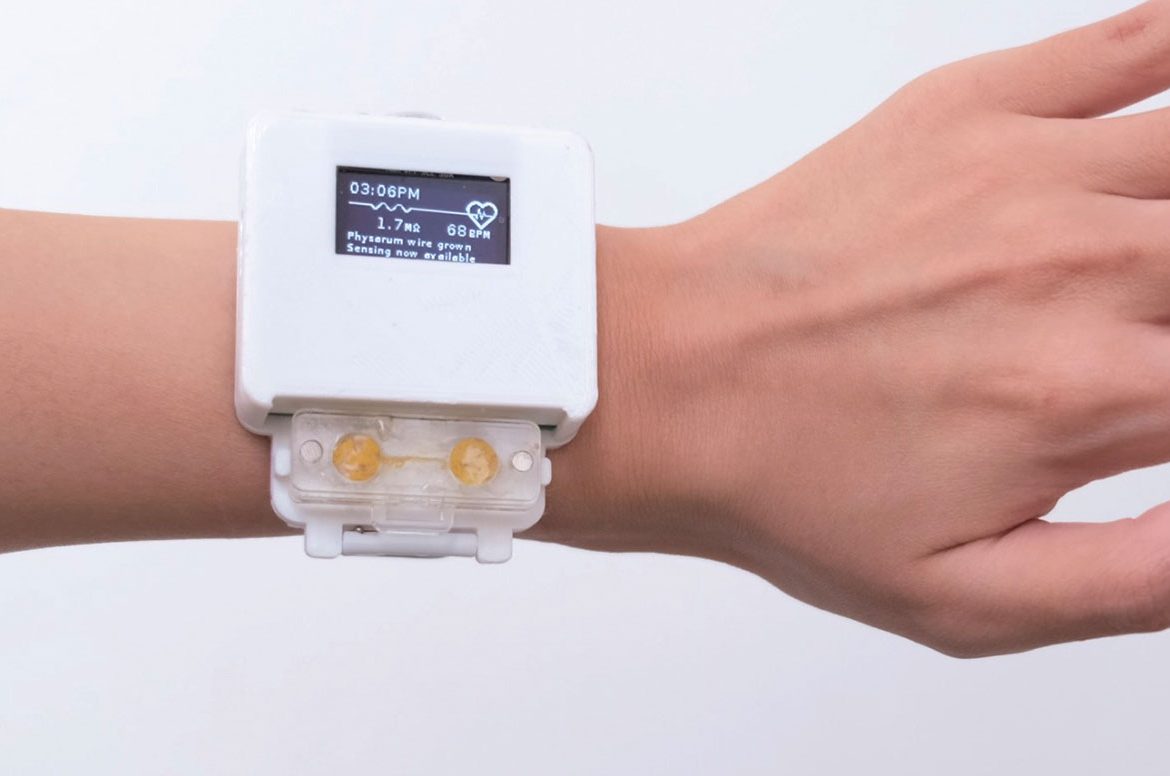
A “Living” Smartwatch
Personal technology products, mobile phones, in particular, have become an indispensable part of everyone’s life. We keep mobile phones in hand as we walk, lie down, eat, and even go to the toilet. However, when they are broken, or worn out or a new model is out, we do not hesitate to throw them away or sell them to buy a new one. This means we do not have a direct emotional connection with these devices. Recently, discarded electronic devices have started to become the world’s fastest growing category of waste, with 40 million tons per year.
Jasmine Lu and Pedro Lopes from the University of Chicago created an interesting device and studied it on subjects to see if it’s possible to change the relationship we have with our electronic devices.
In fact, the device itself is not based on a novel technology. The idea is quite old: a “living” watch that needs your attention. Some of you may recall the Japanese toy Tamagotchi, which became popular towards the end of the 90s. These were virtual babies that required your attention. You had to periodically play with them or they would get bored, and regularly feed them or they would die. Lu and Lopes preferred the smartwatch technology for this experiment and used a fungus called Physarum polycephalum to keep the watch usable.
These smartwatches have two functions. The first is, of course, showing the time, and the other is to follow the wearer’s heart rate. However, in order for the watch to show the heart rate, the conductive slime mold in the device needs to be fed with water and oats so it can grow and complete the electrical circuit it is a part of. It does not die immediately if it is not fed, but the desired function of the device does not work either.
“A lot of human-computer interaction research is motivated by making things easier to use and faster to use, but Jasmine thought there should be more friction; you should have to care for it and feed it every day, for the sake of just having to reflect on it. So, it’s like half art piece and half research paper,” says Lopes.
After the production of these smart and living watches, subjects were asked to feed them regularly for a week to activate the heart rate tracking feature. In the second week, the subjects were asked to stop feeding their watches and record their thoughts about the device during the process. At the end of the experiment, it was observed that subjects had formed a meaningful relationship with their living watches. Tamagotchi toys could be revived by pushing a button when they died, but trying to keep an actual, living organism alive has demonstrated a deeper relationship with technological devices can be formed. When the subjects were asked to stop feeding the organism, they felt remorse and even guilt. “They were very human responses,” Lopes said. “Some people were sad, some people really felt like the connection was broken.”
The aim of Lu and Lopes is not only to conduct an experiment for developing devices that use living organisms as power sources. They wish to provoke the possibility of transforming technological products from simple consumables to objects that are subject to a mutually beneficial commitment relationship. “A lot of the ways that consumer devices are designed now,” says Lu, “those aspects of care are less focused on or are made inaccessible; they are made so that you trash them, instead of engaging with them more. So I definitely think there is a design takeaway of focusing on this aspect of caring for devices instead of just consuming them.”
REFERENCES
- 1. https://news.uchicago.edu/story/scientists-create-living-smartwatch-powered-slime-mold
- 2. https://futurism.com/the-byte/bizarre-smartwatch-living-organism
- 3. https://www.epa.gov/sciencematters/helping-communities-manage-electronic-waste
